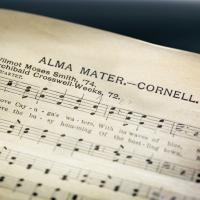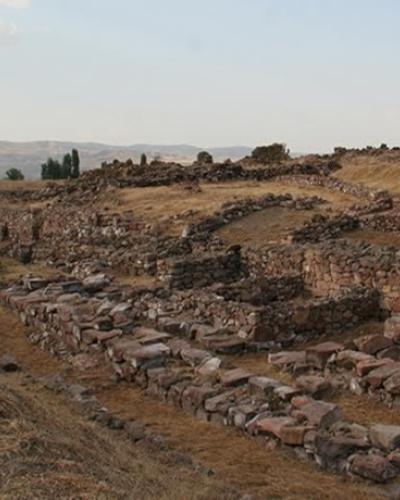Dendrochronological and radiocarbon research by an international team led by Cornell archaeologist Sturt Manning has established an absolute timeline for the archaeological, historical and environmental record in Mesopotamia from the early second millennium B.C.
Manning, the Goldwin Smith Professor of Classical Archaeology and director of the Cornell Tree-Ring Laboratory, resolved how to more accurately date the rich archaeological and textual record across 500 years of ancient Near Eastern history – the time of such famous figures as Hammurabi of Babylon. For several decades, scholars have debated discrepancies in chronological schemes for this period that were up to 150 years or more apart.
The previous inconsistencies in the timeline for ancient Mesopotamia stem from incomplete text records preserved on clay tablets, and existing, proposed and debated chronologies from other sources including partial astronomical records, archaeological materials such as ceramics, a tree-ring growth anomaly in Turkey originally thought to be caused by a volcanic eruption, and dates derived from radiocarbon dating. The multiple and often conflicting timelines have vexed historians and other scholars for a century.
Written records preserved on clay tablets and other sources preserve a rich history about rulers, their families, wars, trade, religion and many other aspects of life from about 2100 to 1600 B.C., but this history was not absolutely dated and instead floated unanchored in calendar time, Manning said.
“For example, did Hammurabi reign from 1848 to 1806 B.C., or 1792 to 1750 B.C., or 1728 to 1686 B.C. or 1696 to 1654 B.C.? These very different dates derive from four of the main chronologies debated until now,” he said.
This entire period – called the Old Assyrian and Old Babylonian periods – also could not be synchronized in relation to contemporary civilizations in surrounding areas including Egypt, where dates for rulers are much more certain, he said.
In mainstream scholarship alone, Manning said, “there are five major scholarly positions and possibilities – the so-called ultra-high, high, middle, low and ultra-low or new chronologies, based on various assumptions and fragmentary evidence. These cover some 200 years of time. This is useless for any real comparison or history. Our work demonstrates that only the middle chronology is possible, and the likely range of debate left is about eight years, versus plus or minus 60 to 100 years. A whole new high-resolution history is now possible.”
The research by Manning and his team – including Cornell researchers Carol Griggs and Brita Lorentzen and colleagues at Oxford, Heidelberg and Vienna universities – was published July 13 in the online science journal PLOS ONE.
In the paper, Manning describes integrating secure dendrochronological (tree-ring) sequences, from archaeological sites linked with the Old Assyrian period, directly with sophisticated analysis of sets of radiocarbon measurements to achieve tightly resolved absolute chronological (calendar) associations, and securely link this tree-ring chronology with the archaeological-historical evidence.
One key to that secure link was Sarıkaya Palace at Acemhöyük in Anatolia (now Turkey). Manning cites matching the dates from a dozen juniper timbers used in the palace’s construction with those of numerous items found inside the palace, including bullae (lumps of clay) carrying impressions of seals from the reign of Shamshi-Adad I and other historical figures, establishing a tight link with the historical record.
“Apart from conquering Assyria and becoming king and building an empire, we know that Shamshi-Adad I died in year 18 of the rule of Hammurabi, so we can tie rulers and history and calendar time together from Anatolia to Assyria and Babylon,” Manning said.
The other key site was Kültepe in Turkey, the source of an archive of some 23,000 documents on clay tablets, where a number of records could be linked to specific Assyrian rulers and officials and associated with archaeological wood samples. This site confirmed and allowed slight refinement of the findings at Acemhöyük, Manning said.
“The fact that the two sites some 200 kilometers apart offer an entirely consistent story is the key powerful evidence,” he said.
The revised tree-ring-sequenced carbon dating for the two cities “is compatible only with the so-called [and previously asserted] middle chronology” of the region, Manning writes in the paper, and “provides a robust resolution to a century of uncertainty in Mesopotamian chronology and scholarship.”
The analysis and re-dating of tree-ring samples from several sites as part of this research also addresses a much-discussed and unusual tree-ring growth anomaly in wood from Porsuk, Turkey, once believed to be associated with the Minoan eruption of the Santorini volcano in the Aegean. Through Manning’s analysis, the anomaly has been directly dated to about 1681-1673 B.C., 20 years earlier than previous assessments, indicating no likely association with the subsequent eruption. The Santorini eruption, pivotal to debates over eastern Mediterranean chronology and the history of Aegean archaeology, probably dates to the late 17th century B.C., Manning said.





